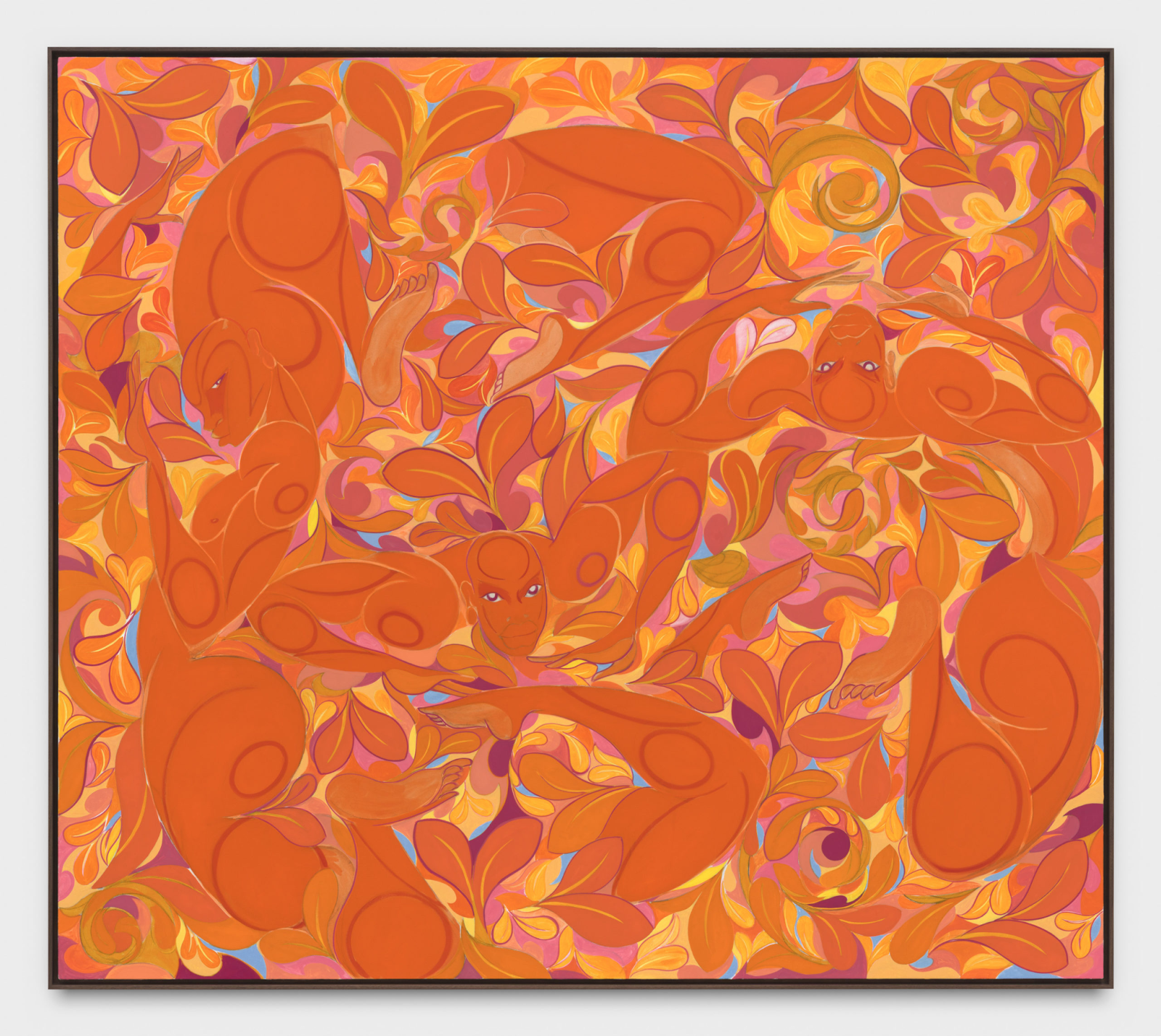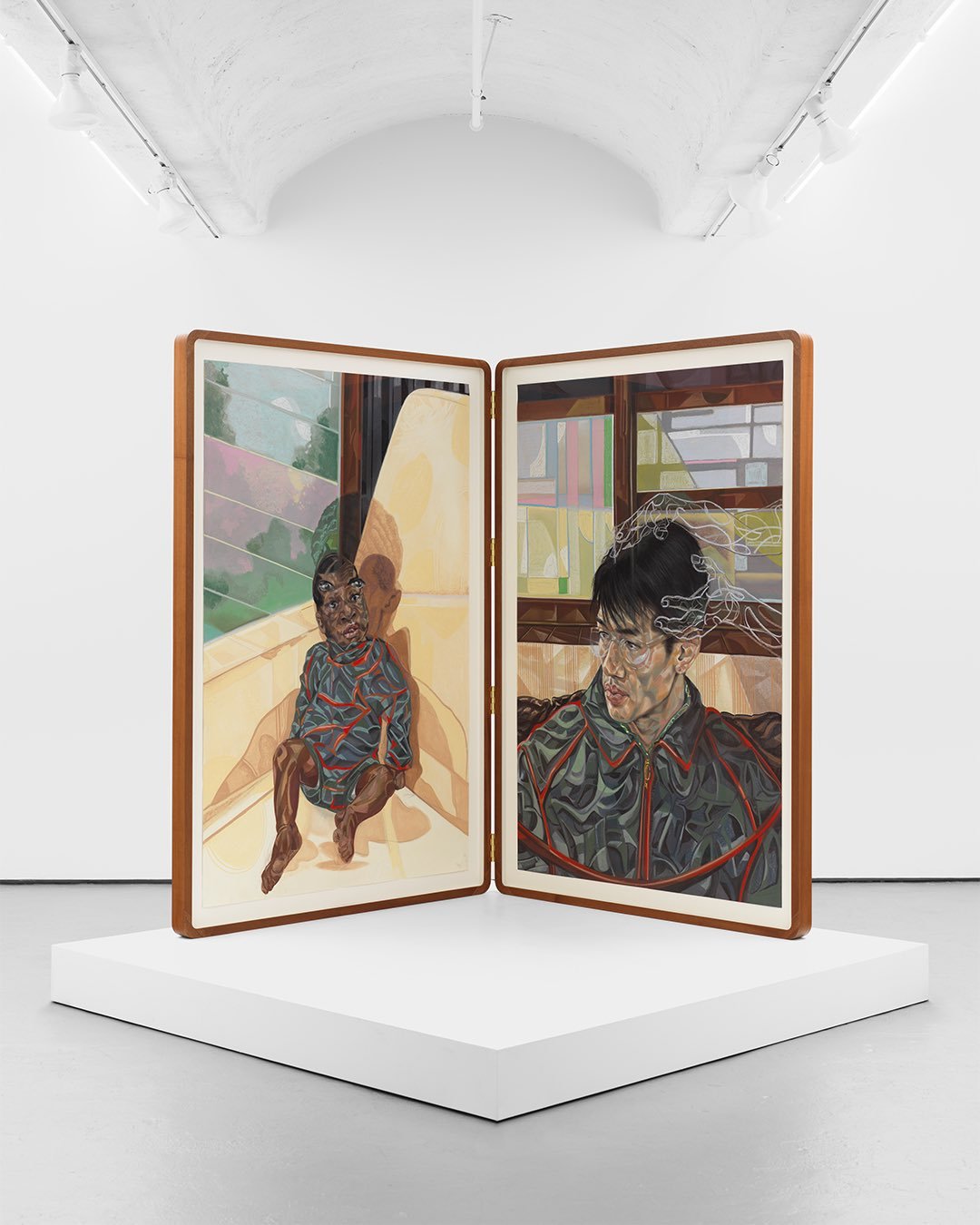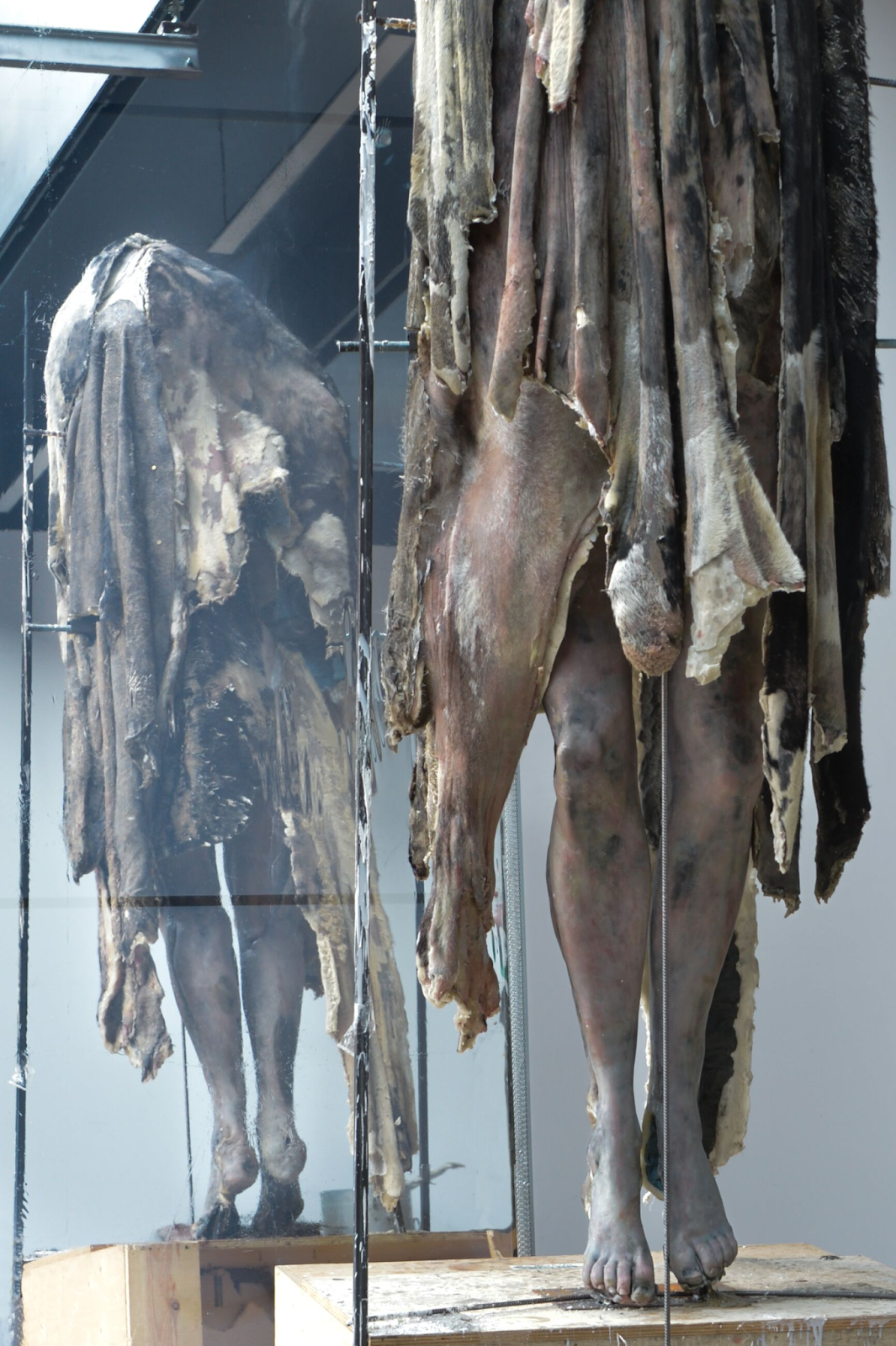Preparing for Venice Art Biennale 2024
As the 60th Venice Art Biennale draws near, Raandoom is excited to highlight some of the upcoming events. Titled “Foreigner’s Everywhere”, this renowned international art exhibition will run from April 20 to November 24, 2024, with a pre-opening on April 17, 18, and 19. Featuring 331 artists from across the globe, exploring this expansive art space can be daunting. Here are our top 10 recommendations for must-see attractions during the event.
“In Praise of Black Errantry”
Palazzo Pisani S. Marina
April 17 – June 29
On the opening day of the Biennale, Unit, a London-based gallery, will unveil a collective exhibition. This showcase will unite pieces from 19 modern and contemporary Afro-diasporic artists, celebrating the Black radical imagination. Alongside contemporary talents, the exhibition will include works from 20th-century icons like Jean-Michel Basquiat, Paul Dash, and Romare Bearden. Titled after the concept of “errantry” by Martinique-born French writer and philosopher Édouard Glissant, the exhibition embodies survival and improvisation. Errantry serves as a powerful symbol of freedom, resistance, and cultural innovation that transcends geographical borders and traditional artistic boundaries, showcasing artists who challenge the status quo with their boundary-pushing creations.
Anya Paintsil, Nose bleeds, no back teeth and no eyebrows, 2023.
Stacey Gillian Abe, The Farmer's Daughter 2, 2024.
Aleksandar Denić, “Exposition Coloniale”
Pavilion of Serbia
April 19 – November 24
Aleksandar Denić’s exhibition at the National Pavilion of Yugoslavia delves deep into the concept of transient spaces, using temporary residences as a lens to examine societal anxieties around encountering the unfamiliar. As an artist displaced in Germany, Denić creatively addresses this unease by constructing unconventional environments that blend physical and emotional boundaries. The exhibition’s title, referencing the aftermath of the colonial era and ongoing cultural divisions, encourages contemplation of historical subjugation and fragmentation. Leveraging his theatrical background, Denić’s installations transcend specific times or places, inviting viewers to explore universal themes and sensations. This immersive experience prompts a nuanced exploration of uncertainty and illusion, fostering engagement with contemporary societal challenges.
Aleksandar Denić, installation view from Exposition Coloniale. Photo by Aleksandar Denić, courtesy of the artist.
Ewa Juszkiewicz, “Locks with Leaves and Swelling Buds”
Palazzo Cavanis
April 20 – September 1
The solo exhibition Locks with Leaves and Swelling Bud by Ewa Juszkiewicz, presented by the Fundación Almine y Bernard Ruiz-Picasso, offers a fresh perspective on women in European art history. Juszkiewicz ingeniously distorts faces using elements like leaves, fabrics, mushrooms, and flowers, reimagining portraits from the Renaissance to the nineteenth century. Her meticulous technique mimics the original paintings’ style while introducing surreal or grotesque alterations to the subjects’ faces. Spanning from 2019 to 2024, her oil portraits challenge traditional genre conventions by blurring the lines between portraiture and still life. This artistic approach prompts viewers to contemplate the intricate relationship between identity and nature, providing a profound commentary on women’s roles under patriarchal structures.
Ewa Juszkiewicz, Untitled (after François Gérard), 2023.
Shahzia Sikander, “Collective Behavior”
Palazzo Soranzo Van Axel
April 20 – October 20
Shahzia Sikander, a Pakistani American artist, presents another solo exhibition showcasing works that blend the tradition of miniature paintings with contemporary notions of feminism and post-colonialism. Infusing traditional Persian and South Asian techniques with modern concepts, Sikander’s exhibition offers an exemplary selection of artwork spanning her career. Titled Collective Behavior, this exhibition serves as a comprehensive display of the artist’s distinctive iconography and ongoing artistic evolution, incorporating new mediums to express her unique vision. It stands as the most extensive presentation of Sikander’s work to date, showcasing her enduring innovation and mastery across diverse forms of media.
Shahzia Sikander, Segments of Desire Go Wandering Off, 1998.
Shahzia Sikander, Fixed, Fluid, 2022.
Peter Hujar, “Portraits in Life and Death”
Istituto Santa Maria della Pietà
April 20 – November 24
Presented by the Peter Hujar Foundation, the first-ever European exhibition will unveil the complete collection of 41 photographs from Portraits in Life and Death, the acclaimed photographer’s seminal 1976 book. This showcase serves as a moving exploration of intimacy and mortality, shedding light on Hujar’s profound portrayals of existence and decay. Through his unflinching lens, Hujar captured his subjects with astonishing intimacy and vulnerability, inviting viewers to delve into the depths of the human condition. Each photograph becomes a window into the soul, offering a glimpse into the complexities of life and the inevitability of death.
Peter Hujar, Palermo Catacomb #1, 1963.
Peter Hujar, Candy Darling on Her Deathbed, 1973.
“Passengers in Transit”
193 Gallery
April 20 – November 24
This year, the Paris-based 193 Gallery’s Venice space will host the Centre for Contemporary Art, Lagos, presenting a group show featuring five women artists of African descent: April Bey, Christa David, Euridice Zaituna Kala, Joana Choumali, and Thandiwe Muriu. They explore foreignness, identity, and belonging in our global society, employing interdisciplinary practices to navigate identity, gender, memory, and place. Their narratives transcend geographic borders, engaging with history and fiction to prompt reflections on black body representation and speculate on potential futures, especially regarding cross-cultural identity and the Black female body.
Thandiwe Mariu, The Perfect Masterpiece, 2023.
April Bey, It’s Not A Headband You Stupid Bitch, I Can See Hella Shit You Can’t, 2023.
“Nigeria Imaginary”
Pavilion of Nigeria
April 20 – November 24
Participating in the Biennale for the second time, the Nigeria Pavilion will showcase Nigeria Imaginary, a group exhibition featuring new, commissioned works by eight Nigerian and Nigerian diasporic artists. This diverse lineup includes Tunji Adeniyi-Jones, Ndidi Dike, Onyeka Igwe, Toyin Ojih Odutola, Abraham Oghobase, Precious Okoyomon, Yinka Shonibare CBE RA, and Fatimah Tuggar, spanning various mediums such as drawing, painting, video, photography, A.I., and augmented reality. Their collective vision imagines new horizons for Nigeria, explores the legacy of colonialism, and envisions an alternative nation, offering a manifesto for the future. According to curator Aindrea Emelife, the exhibition represents a forward-looking perspective rooted in tradition, making it one of the most ambitious African presentations in the history of the Biennale.
Tunji Adeniyi Jones, Triple Dive Orange, 2022.
Toyin Ojih Odutola, Yokai (Josiah + Keizuke), 2021-2022.
Valeria Montti Colque, “Cosmonación”
Pavillion of Chile
April 20 – November 24
Valeria Montti Colque’s exhibition Cosmonación delves deeply into themes of nationhood, exile, migration, and diaspora, drawing inspiration from the concept of 'Cosmonation.' This term encapsulates the idea of diasporic communities maintaining strong connections to their ancestral lands across vast geographical distances. Through this project, Montti Colque explores the intricate process of 'territorialising life' amidst diverse cultural identities. Central to the exhibition is the symbolic figure of Mamita Montaña (Mother Mountain), serving as a sanctuary for exiles, refugees, and inhabitants of an “imagined community” beyond national borders. Standing over five meters tall, this installation comprises a blend of collages, watercolours, drawings, textiles, ceramics, and photographs, symbolising a haven for those displaced by exile. The exhibition seamlessly merges ritual and political elements, allowing viewers to connect with the vastness of nature and community strength within an urban setting.
Valeria Montti Colque, Umah, 2023.Photo by José Figueroa, coutesy of Köttinspektionen.
“SOUTH WEST BANK—Landworks, Collective Action and Sound”
Palazzo Contarini Polignac
April 20 – November 24
Selected as a Collateral Event of the Biennale, SOUTH WEST BANK—Landworks, Collective Action, and Sound focuses on artworks created by artists, collectives, and allies in and around the southern West Bank in Palestine. Organised by Artists + Allies x Hebron in collaboration with Dar Jacir for Art and Research, the exhibition delves into themes of land, agriculture, and heritage within a rapidly changing landscape. These artists collectively explore the historical transmissions of memory and collectivity, emphasising the notion that ‘home’ is deeply entrenched in traditional practices. Through their works, they express an Anthropocene marked by forced dispossession and occupation, shedding light on the complex realities of life in the region.
Duncan Campbell with Samer Albarbari, Nothing Impossible, 2018. Photo by Emily Jacir/Dar Jacir for Art and Research.
Paesaggio Umano, still from perfomance Revolutionarry Letter #7, 2022. Photo by Dar Jacir for Art and Research.
Berlinde De Bruyckere, “City of Refuge III”
Abbazia di San Giorgio Maggiore
April 20 – November 24
Berlinde De Bruyckere’s Biennale exhibition continues her tradition of anatomically influenced, macabre works, now intertwined with themes of sanctuary and shelter. The venue’s spiritual intensity further enhances this thematic exploration, transforming the 16th-century Benedictian church into a meditative space of sanctuary and rebirth through three distinct groups of works. Each group engages profoundly with the church’s monumental architecture, symbolism, and historical significance. Ghostly sculptures in the nave emerge from clustered pedestals, blurring the lines between the earthly and divine realms. The Sacristy installation shows wax-cast tree trunks on metal tables, symbolising renewal amid decay. Lastly, in the church’s gallery, historical woodcarvings inspire contemporary wall vitrines, bridging past and present motifs. Drawing from European legacies and cultural lore, De Bruyckere’s hybrid forms explore themes of love, suffering, protection, and mortality, transcending theological boundaries to resonate universally with human experiences of pathos, tenderness, and unease.
Berlinde De Bruyckere, Arcangelo II (San Giorgio), 2023-2024 (work in progress). Photo by Mirjam Devriend. Courtesy of Hauser & Wirth and the artist.
















